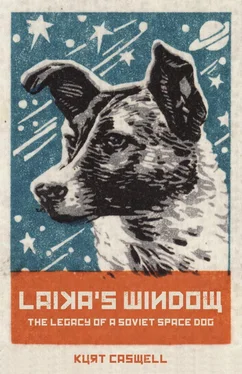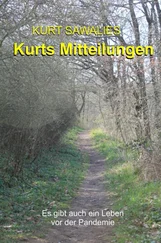¤
In some cultures, it is believed that the dog is a medium through which communication with the spirit world is made possible. Anubis in ancient Egypt attends the dead, oversees mummification, and measures the scales that weigh the heart to determine if its bearer is worthy of entering the land of the dead. The dog is a guide between the worlds of life and death, between the known and the unknown, the human and the animal (for the dog reminds us that we are animals), between the conscious mind and the murky wild of the unconscious mind, between the psyche and the soul. The dog is our companion, just as death is our companion. The dog does not desert its master even in death; the two might travel into death together. The dog eats the dead and chews the bones, and digs to exhume or to bury the dead. Anubis is the protector of graves. The dog guards the gates of hell—Cerberus (Greek) and Garm (Norse), the hellhounds, or the hounds of hell. The dog is a healer. The dog is a wanderer too.
The human animal longs for the companionship of the animal dog, for connection with dogs is to reconnect with our animal natures, our animal soul. The human animal longs for companionship with dogs to help us dismember the ego and join in the feast of the senses. This is why the Norse god Odin travels with companion wolves; why dogs accompany the war god Mars; why the founders of Rome—Romulus and Remus—are said to have been raised by wolves; why in North America the wolf is revered for its courage, endurance, cooperation, and protection of its young; why Fenrir, the death wolf of Nordic myth, destroys the old to make way for the new.
The dog is an extension of the human animal, like a club is an extension of the hand to empower it. We cast a dog out beyond us to test the boundaries of our sight, to take us where we cannot go alone. We cast a dog out beyond us to scout. Dogs are scouts. Hands and eyes, the shepherd sends his dogs out to bring the sheep around, or bring the lambs home, to defend the sheep and lambs from the wolf, the bear, the big cats. On the hunt, we send dogs out to retrieve what we have killed. We send dogs out to kill. We send dogs out to tell us what is out there that we might kill and eat, and so survive. The dog improves us, enhances us, makes us stronger. And it has long been so. The dog’s unparalleled sense of smell, with its ability to track and discover, can help us find what we have lost. We cast a dog out on the trail of our own longings, our searches, our explorations. The dog does not hesitate, or waver, or falter. It is singular in its purpose, its only life stripped down to what is, at last, necessary. The dog is an extension of the human mind, like science is an extension of the human mind. We cast the dog out before us like a scientific instrument, like the Mars rover Curiosity , an extension of our hands and eyes on a far distant planet. The Mars rover is like a mechanical dog. Dogs can understand us, our feelings, our gestures, our language. They can nearly speak to us, at least we can understand something of what they want to say. And in listening to what they say to us, and what we say to them, we come to think of them as feeling like us. We sometimes think we feel like them. And a dog will go to its death for us, to protect us, to protect its place that is with us.
What is all of this but an expression of love? Dogs will go and do and give, to us, because we ask, because they depend on us, because they love us, because we, in turn, love them.
FOUR
¤
Scouting the Atmosphere
Let the dog, man’s helper and friend since prehistoric times, be sacrificed for science. But our dignity obligates us to do this only when necessary and always without unnecessary torment.
IVAN PAVLOV inscribed on the memorial to his lab dogs in Saint Petersburg, early twentieth century
Between 1951 and 1966, the Soviet Union launched some forty-two rockets into space and into orbit carrying more than fifty different space dogs. Most flew in pairs, and with the exception of two dogs that each flew with a mannequin, Laika is the only dog who flew alone. Some dogs flew only once, because they were either killed or retired for some reason. Others flew multiple times, the record probably held by a dog named Otvazhnaya, or Brave One, who flew seven times.
Cataloging the flights of the space dogs is a difficult task, because some had more than one name. In fact, some of the scientists and engineers working on rockets and missiles also had alternative names to help hide their identities. If a dog died on a flight mission, a new dog might be given its name. Some of these dogs assuming the name of another were numbered in sequence, as in Fox and Fox 2, and some were not. The team might change a dog’s name from its first to its second flight, or change a dog’s name as it waited on the launchpad for liftoff. The two most reliable sources I found for the identification of the space dogs and their missions are Olesya Turkina’s Soviet Space Dogs , which includes a comprehensive list of space dog flights; and Animals in Space , by Colin Burgess and Chris Dubbs, who invested considerable time and effort in piecing together a chronology of the flights.
To better understand Laika’s story, a number of space dog flights deserve our attention, missions by some dogs who flew before her and some who flew after.
¤
Three hundred fifty kilometers up the Volga River from its delta at the Caspian Sea is the site of the Soviet Union’s once secret military missile test center, Kapustin Yar. Backed by the vegetated green of the great Volga’s braided channels, the test center faces eastward onto a vast system of dunes and wastes, the Ryn Desert stretching some six hundred kilometers into western Kazakhstan. Temperatures here can reach highs of 45 degrees Celsius in summer and lows of –35 degrees Celsius in winter. It is a windswept and arid land, empty of people but for a few scattered villages and towns. Kapustin Yar is not so secret anymore, but at its genesis in 1946 it was central to the Soviet Union’s covert missile program and the site of the first suborbital space dog launches.
On July 22, 1951, the first two space dogs—Dezik and Tysgan—were launched into the upper atmosphere from Kapustin Yar. Laika had yet to be born, and while putting a satellite into orbit, followed by a dog and eventually a man, was the dream of some engineers and scientists, it was yet far from possible. So much was unknown. So much had yet to be tested.
Mostly white with medium to long hair, Dezik had a fluffy, kind-looking face and an amiable and positive spirit. Tsygan, whose name means “gypsy,” had a mostly white body with black patches over her eyes and much of her head, like a border collie. Both dogs had remained calm and easy during the rigorous training, making them prime candidates for this first test flight.
While the rocket that was to carry Dezik and Tysgan into space waited on the launchpad, the dogs were dressed in their flight suits and sealed in a capsule inside the rocket, even the capsule that would be repurposed for Laika’s flight six years later. The team had chosen to launch early in the morning because the light at this hour would make the rocket visible against the broad expanse of desert sky. A fleet of vehicles sat nearby so that the recovery team could drive to the site where the capsule came down. Also invited to the launch was a party of dignitaries, VIPs, and members of the Soviet government, all eager to witness this historic launch. Just before the hatch was closed, Yazdovsky spoke to the two dogs through the portal, words commonly offered to Russian soldiers on their way into battle. “Return with victory,” he said.
The rocket went up, a long line of white into the blue. A million-horsepower engine pushed the rocket higher and higher, hitting a top velocity of 2,610 miles per hour. The dogs’ heart rates shot up. The g-force of acceleration bore down on them, their bodies now weighing five times more than on Earth. They could not hold up their heads. The rocket reached an apex altitude of more than 100 kilometers or 62 miles, just above the Karman line. And then a sudden and calming relief as the dogs entered microgravity. Their heart rates slowed and returned to normal. Secured inside the capsule, Dezik and Tysgan did not float about the pressurized cabin, but they were nearly weightless for four full minutes.
Читать дальше












